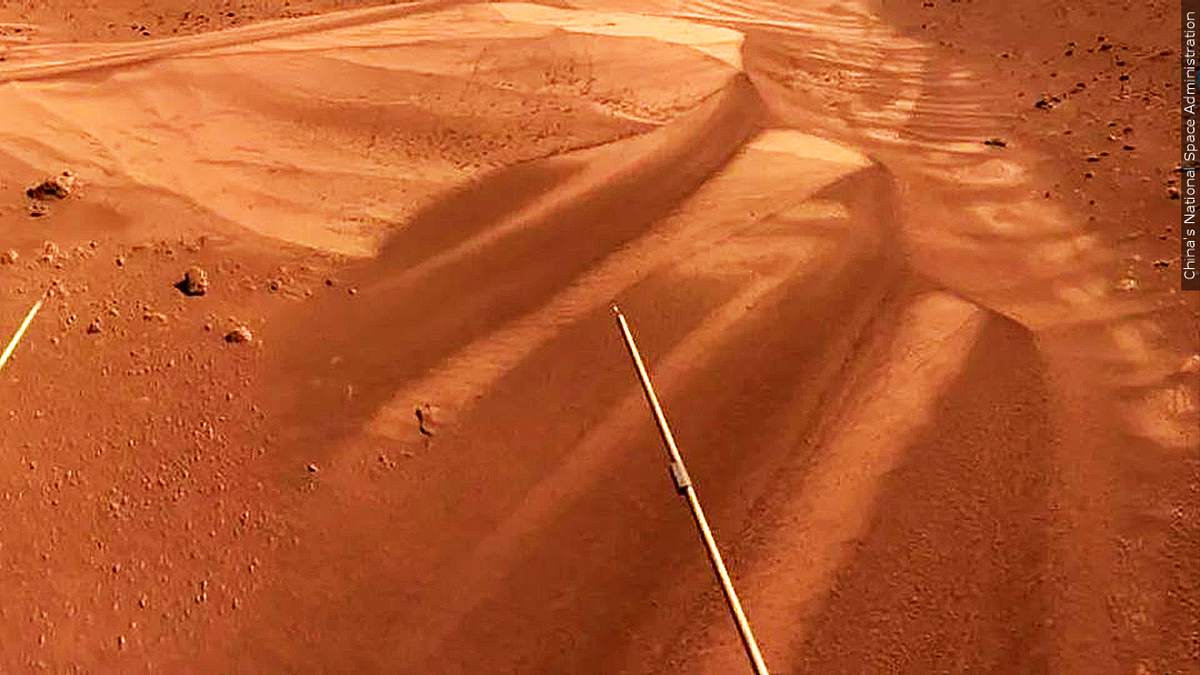A new discovery could impact the future of human exploration of Mars

CALGARY (CTV Network) -- While humans may be starry-eyed about sending people across the solar system to live on Mars one day, the discovery of a "relict glacier" on the red planet could mean that dream is one step closer to reality.
Scientists say the "groundbreaking announcement" presented at the 54th Lunar and Planetary Science Conference in The Woodlands, Texas, could mean "surface water ice" exists on Mars even to this day.
A "relict glacier" is not made of ice, but is rather one of several "light-toned deposits" (LTDs) found in the area. Scientists say LTDs are typically made up of light-coloured sulfate salts, however this one appears to have very similar features to a glacier.
Researchers say the relict glacier was found near Mars' equator (precisely in Eastern Noctis Labyrinthus at coordinates 7° 33' S, 93°14' W for space enthusiasts), meaning ice may still be around the area at shallow depths which could have "significant implications for future human exploration."
The discovery suggests Mars may have had a more "watery" history than scientists previously suspected, which could change our understanding of how the red planet can sustain human life.
"We've known about glacial activity on Mars at many locations, including near the equator in the more distant past. And we've known about recent glacial activity on Mars, but so far, only at higher latitudes. A relatively young relict glacier in this location tells us that Mars experienced surface ice in recent times, even near the equator, which is new," said Pascal Lee, a planetary scientist with the SETI Institute and the Mars Institute, and the lead author of the study.
"The desire to land humans at a location where they might be able to extract water ice from the ground has been pushing mission planners to consider higher latitude sites. But the latter environments are typically colder and more challenging for humans and robots. If there were equatorial locations where ice might be found at shallow depth, then we'd have the best of both environments: warmer conditions for human exploration and still access to ice," Lee said.
However, Lee says more research needs to be done to figure out if, and how much, ice may be preserved under the LTDs.
"What we think happened here is that salt formed on top of a glacier while preserving the shape of the ice below, down to details like crevasse fields and moraine bands.
"Water ice is, at present, not stable at the very surface of Mars near the equator at these elevations. So, it's not surprising that we're not detecting any water ice at the surface. It is possible that all the glacier's water ice has sublimated away by now. But there's also a chance that some of it might still be protected at shallow depth under the sulfate salts," Lee said.
Sourabh Shubham, a graduate student at the University of Maryland's Department of Geology, and a co-author of the study, says it is probable volcanic eruptions in the area of the discovery preserved the glacier's imprint.
"This region of Mars has a history of volcanic activity. And where some of the volcanic materials came in contact with glacier ice, chemical reactions would have taken place at the boundary between the two to form a hardened layer of sulfate salts," Shubham explained. "This is the most likely explanation for the hydrated and hydroxylated sulfates we observe in this light-toned deposit."
Scientists add that as volcanic materials in the area eroded over time, the glacier's imprint became visible in the salt deposits.
"Glaciers often present distinctive types of features, including marginal, splaying, and tic-tac-toe crevasse fields, and also thrust moraine bands and foliation. We are seeing analogous features in this light-toned deposit, in form, location, and scale. It's very intriguing," said John Schutt, a geologist at the Mars Institute, experienced icefield guide in the Arctic and Antarctica, and a co-author of this study.
The study suggests the relict glacier must be relatively young geologically speaking, probably from the Amazonian period—the most recent geologic period which includes modern Mars.
Authors of the study think what happened on Mars may be similar to what happened in the salars of the Altiplano in South America. Old glacier ice in that area has been preserved underneath "blankets of bright salts."
For more sci-tech news, visit: ctvnews.ca/sci-tech